Solar eclipse of June 10, 2021
| Solar eclipse of June 10, 2021 | |
|---|---|
 Map | |
| Type of eclipse | |
| Nature | Annular |
| Gamma | 0.9152 |
| Magnitude | 0.9435 |
| Maximum eclipse | |
| Duration | 231 sec (3 m 51 s) |
| Coordinates | 80°48′N 66°48′W / 80.8°N 66.8°W |
| Max. width of band | 527 km (327 mi) |
| Times (UTC) | |
| Greatest eclipse | 10:43:07 |
| References | |
| Saros | 147 (23 of 80) |
| Catalog # (SE5000) | 9555 |
An annular solar eclipse will occur on June 10, 2021. A solar eclipse occurs when the Moon passes between Earth and the Sun, thereby totally or partly obscuring the image of the Sun for a viewer on Earth. An annular solar eclipse occurs when the Moon's apparent diameter is smaller than the Sun's, blocking most of the Sun's light and causing the Sun to look like an annulus (ring). An annular eclipse appears as a partial eclipse over a region of the Earth thousands of kilometres wide. This eclipse will be unusual as the path of the total eclipse will move to the north east, then north, north west, west, south west, south, and finally south east across the Arctic, while most eclipse paths move west to east. This reversal is only possible in polar regions.This eclipse is also notable for the fact that the path of annularity passes over the North Pole.
While the eclipse is visible primarily in the relatively unpopulated area near the Arctic Circle, in the northeastern United States and Canada, the sun will be partially eclipsed at sunrise.
Images

Animated path
Related eclipses
Solar eclipses of 2018-2021
Each member in a semester series of solar eclipses repeats approximately every 177 days and 4 hours (a semester) at alternating nodes of the Moon's orbit.
Note: Partial solar eclipses on February 15, 2018, and August 11, 2018, occur during the previous semester series.
| Solar eclipse series sets from 2018–2021 | |||||
|---|---|---|---|---|---|
| Ascending node | Descending node | ||||
| 117 | July 13, 2018 Partial |
122 | January 6, 2019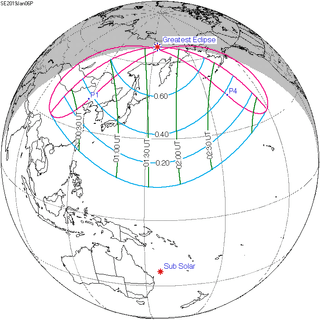 Partial | ||
| 127 | July 2, 2019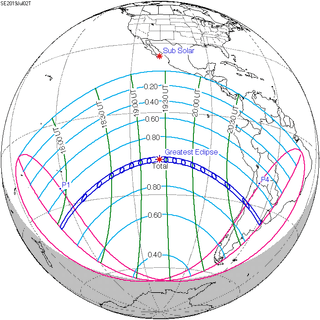 Total |
132 | December 26, 2019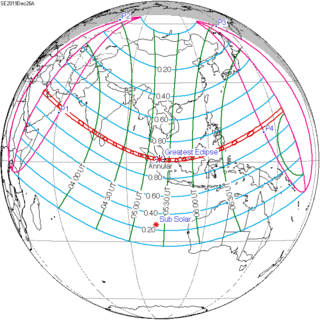 Annular | ||
| 137 | June 21, 2020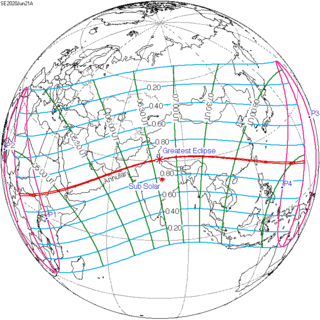 Annular |
142 | December 14, 2020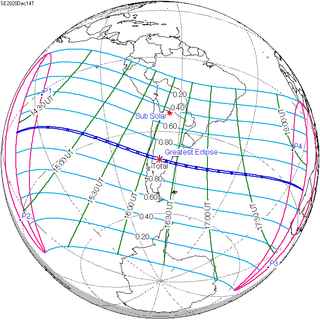 Total | ||
| 147 | June 10, 2021 Annular |
152 | December 4, 2021 Total | ||
Metonic series
The metonic series repeats eclipses every 19 years (6939.69 days), lasting about 5 cycles. Eclipses occur in nearly the same calendar date. In addition the octon subseries repeats 1/5 of that or every 3.8 years (1387.94 days).
| 21 eclipse events, progressing from north to south between June 10, 1964 and August 21, 2036 | ||||
|---|---|---|---|---|
| June 10–11 | March 27–29 | January 15–16 | November 3 | August 21–22 |
| 117 | 119 | 121 | 123 | 125 |
 June 10, 1964 |
 March 28, 1968 |
 January 16, 1972 |
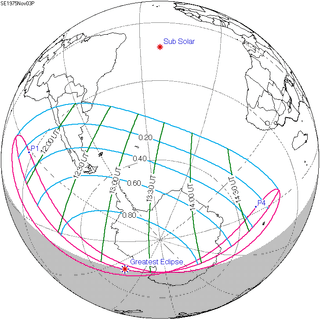 November 3, 1975 |
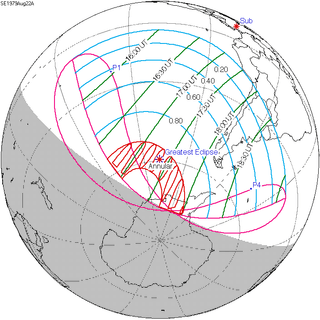 August 22, 1979 |
| 127 | 129 | 131 | 133 | 135 |
 June 11, 1983 |
 March 29, 1987 |
 January 15, 1991 |
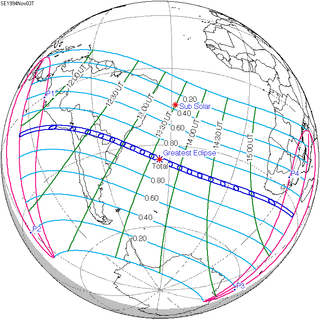 November 3, 1994 |
 August 22, 1998 |
| 137 | 139 | 141 | 143 | 145 |
 June 10, 2002 |
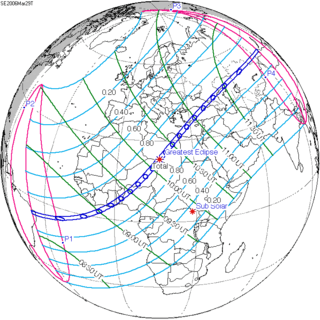 March 29, 2006 |
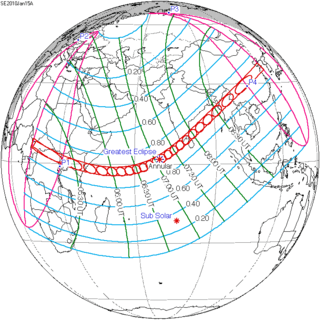 January 15, 2010 |
 November 3, 2013 |
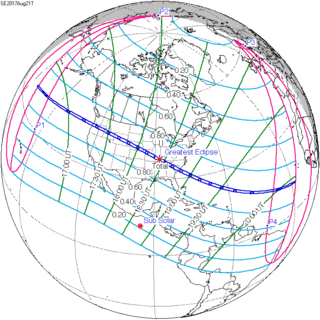 August 21, 2017 |
| 147 | 149 | 151 | 153 | 155 |
 June 10, 2021 |
 March 29, 2025 |
 January 14, 2029 |
 November 3, 2032 |
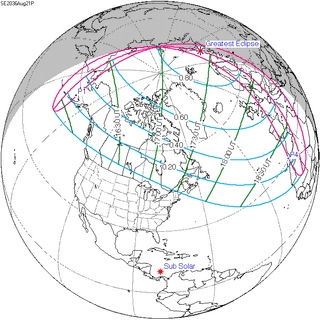 August 21, 2036 |
Notes
References
- Earth visibility chart and eclipse statistics Eclipse Predictions by Fred Espenak, NASA/GSFC
| Wikimedia Commons has media related to Solar eclipse of 2020 December 14. |
